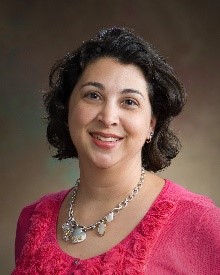We Didn't Know This Could Happen

Amber Yates, MD, FAAP
August 29, 2019
I walk in the room and introduce myself to a young couple and their 4-week-old infant.
“Hi, I’m Dr. Yates. What did your pediatrician tell you about why your baby was referred to the hematology clinic?” I ask.
The mother looks at me with apprehension in her eyes. “To find out if my baby has sickle cell.”
After discussing some of the baby’s newborn screening results, I ask the parents, “Do you know if you have sickle cell trait?”
The mother doesn’t look up. After a pause, she replies.
“My mother didn’t tell me I had sickle cell trait until after we got the results my baby might have sickle cell disease,” the new parent said. “We didn’t know this could happen.”
Sickle cell trait’s silent legacy
Telling parents their newborn has sickle cell disease is never easy. The news is shocking, particularly when one or both parents don’t know their trait status.
A 2016 study found that the majority of African American young adults surveyed were uncertain about their sickle cell trait status. Those parents are caught off guard by this life-changing news.
I find this to be especially true when the child has one of the less common forms of sickle cell like hemoglobin SC disease or sickle beta thalassemia. One parent may know they have sickle trait, but the other has no idea they are a genetic carrier of a condition that puts their child at risk for sickle cell disease.
Today in the United States, parents of a child with sickle cell trait typically learn this information when the baby is 4–6 weeks old. As sickle cell trait is not a medical disease, some parents breathe a sigh of relief without fully understanding the importance of knowing this information. They may believe there’s no need to mention the status. It’s not often included in a child’s active problem list in their medical chart.
“Parents of a child with sickle cell trait typically learn this information when the baby is 4–6 weeks old. As sickle cell trait is not a medical disease, some parents breathe a sigh of relief without fully understanding the importance of knowing this information. They may believe there’s no need to mention the status.”
Why sickle cell trait status is important to know
I encourage parents to share this information with their children during the teenage years so they can be aware of their sickle cell trait (or other hemoglobin traits like hemoglobin C or E) and understand the risks of having a child with a hemoglobin disorder like sickle cell disease. It’s also useful to know because, in rare cases, sickle cell trait can affect health outcomes.
Pediatricians also have a unique opportunity to discuss this information with teenage patients prior to transition to adult care. September, which is National Sickle Cell Awareness Month, is the perfect time to start this conversation. The Centers for Disease Control (CDC) has a great infographic to explain the inheritance of the three main types of sickle cell disease.
What if a parent doesn’t know their child’s sickle cell status? Children born after 2006 should be able to obtain sickle cell status via newborn screening results. Pediatricians can help families obtain this information. For children born before this date, screening can be performed with the combination of complete blood count (screening for thalassemia trait) and hemoglobin analysis to screen for hemoglobin variants. Sometimes local sickle cell disease organizations will provide testing for free.
As they say, knowledge is power. In this circumstance, I couldn’t agree more. Knowing your sickle cell status allows key conversations to occur in advance so fewer families say, “We didn’t know this could happen.”
*The views expressed in this article are those of the author, and not necessarily those of the American Academy of Pediatrics.
About the Author
Amber Yates, MD, FAAP
Amber Yates, MD, FAAP is a member of the American Academy of Pediatrics Section of Hematology-Oncology Executive Committee, Council on Communications and Media and Texas Pediatric Society. She is co-director of the Texas Children’s Sickle Cell Center at Texas Children’s Hospital and assistant professor of pediatrics at Baylor College of Medicine. Follow her on Twitter at @sicklecelldoc.